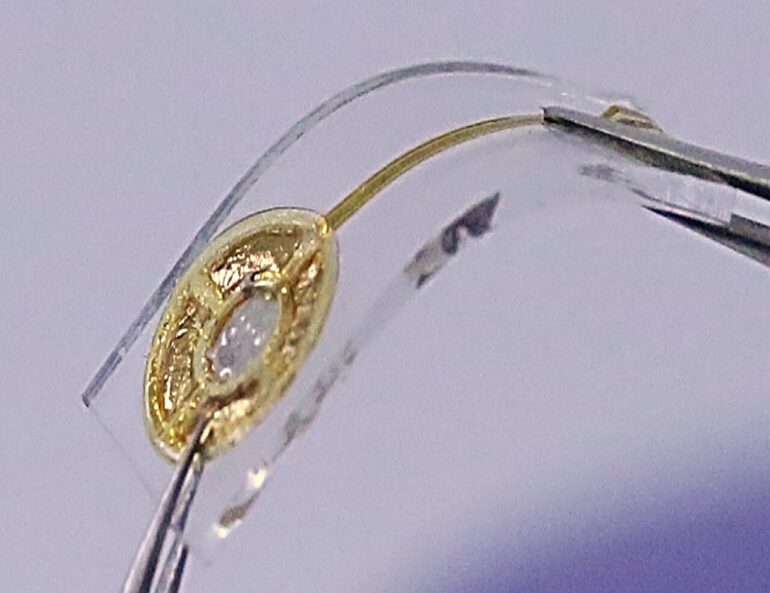TL;DR:
- Research teams led by Professors Kyung-In Jang and Jihwan Choi introduce an artificial electronic tongue system that emulates the human sense of taste.
- The system integrates advanced sensors and deep-learning technology to measure saltiness, sourness, bitterness, and sweetness simultaneously and accurately.
- It offers objective and consistent taste evaluation, aiding in product development and quality control across industries like food, beverages, cosmetics, and pharmaceuticals.
- By addressing accuracy and reliability challenges, the teams achieve remarkable success in wine taste profiling, with a classification accuracy rate exceeding 95%.
- The electronic tongue’s potential applications extend to diverse fields, including food and liquor development, cosmetics, and pharmaceuticals.
Main AI News:
In a groundbreaking development, research teams led by Professor Kyung-In Jang of the Department of Robotics and Mechanical and Electronic Engineering at DGIST and Professor Jihwan Choi from the Department of Aerospace Engineering at KAIST have unveiled a cutting-edge artificial electronic tongue system. This remarkable technology closely emulates the human gustatory system and is poised to make significant waves across various industries, including food, beverages, cosmetics, and pharmaceuticals.
The electronic tongue represents a sophisticated taste sensor, capable of discerning a spectrum of tastes while meticulously quantifying their nuances, all in a manner that mirrors our natural sense of taste. It leverages a fusion of state-of-the-art sensors and advanced deep-learning techniques to simultaneously and accurately measure attributes such as saltiness, sourness, bitterness, and sweetness. In essence, it serves as an objective and consistent tool for evaluating taste, making it invaluable for both product development and quality control processes.
Much like the taste receptors found in our taste buds, this electronic tongue translates chemical information into precise electrical signals. These signals are then relayed to the brain via a neural network, allowing for the identification and differentiation of various tastes. However, previous iterations of this technology faced limitations in terms of accuracy and reliability due to the absence of deep-learning integration, with research primarily concentrated on enhancing the sensor component.
To overcome these challenges, the collaborative research teams led by Professors Jang and Choi embarked on a journey to craft an electronic tongue system that seamlessly incorporates both sensors and deep-learning capabilities. They developed four specialized sensors, each tailored for detecting specific tastes, and engineered a well-structured sensor element at a millimeter scale to ensure consistent measurements. Additionally, they introduced a custom-designed deep-learning algorithm for efficient taste analysis.
Putting their creation to the test, the research team conducted taste profiling experiments with six different wines, harnessing the power of deep-learning technology. Remarkably, they achieved a classification accuracy rate exceeding 95% and implemented a recommendation system that could suggest wines akin to those already in existence. This remarkable success underscores the expansive potential of the electronic tongue system.
Looking ahead, this innovative technology holds the promise of revolutionizing multiple sectors, including the realms of food and beverage development, cosmetics, and pharmaceuticals. Professor Kyung-In Jang, hailing from DGIST’s Department of Robotics and Mechanical and Electronic Engineering, enthused, “The technology we’ve pioneered in this study merges sensor capabilities with deep learning to quantitatively evaluate intricate flavors, a feat previously considered challenging.” He further added, “We’ve demonstrated its ability to reliably distinguish tastes through wine testing, and we’re committed to advancing this research for applications across diverse industries like cosmetics and pharmaceuticals.“
Conclusion:
The introduction of the groundbreaking electronic tongue system marks a significant advancement in sensory analysis technology. Its ability to quantitatively evaluate taste with precision and reliability opens doors for innovation across various industries. In particular, it promises to streamline product development and enhance quality control in the food, beverage, cosmetics, and pharmaceutical sectors, ultimately driving market competitiveness and consumer satisfaction.

